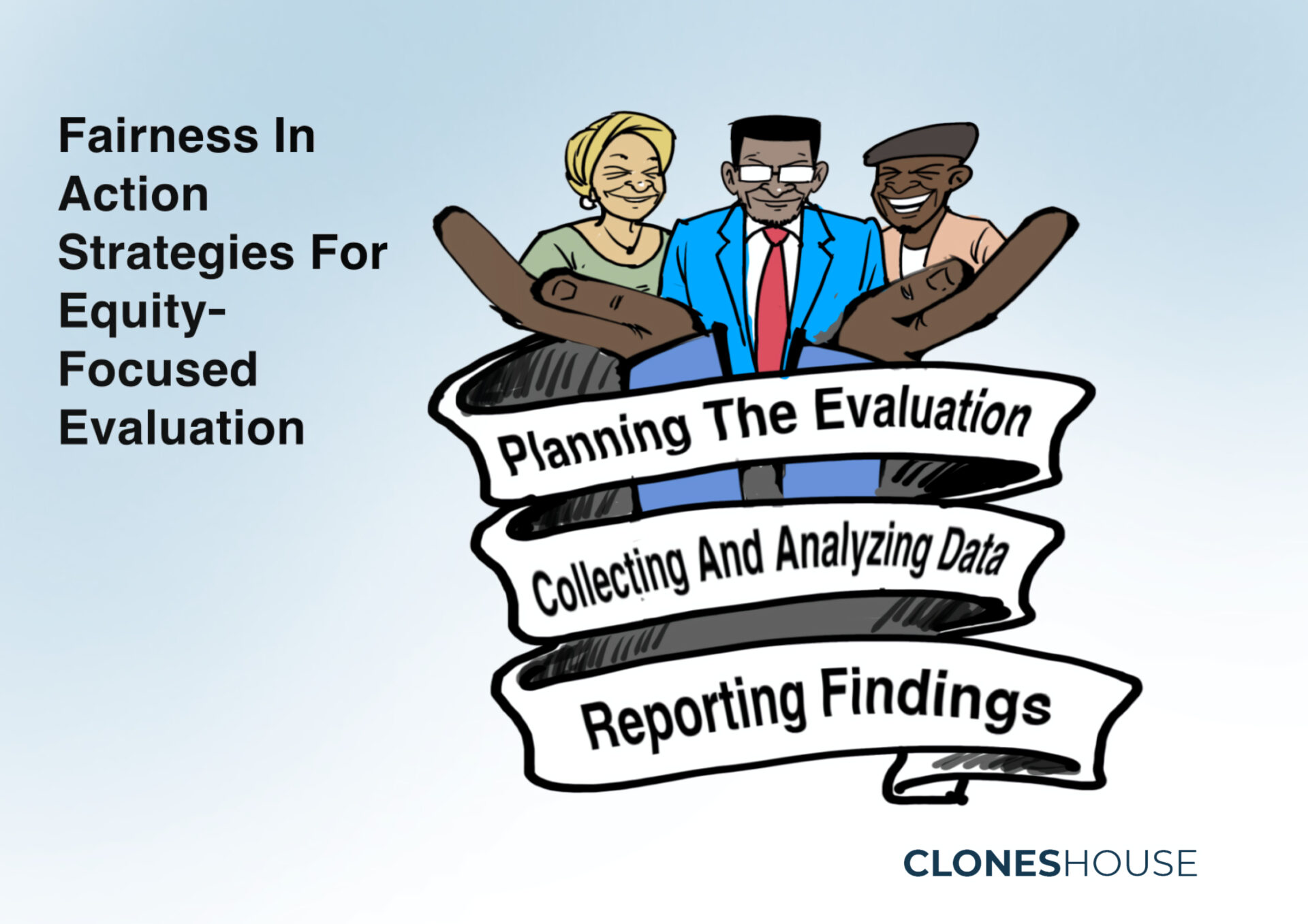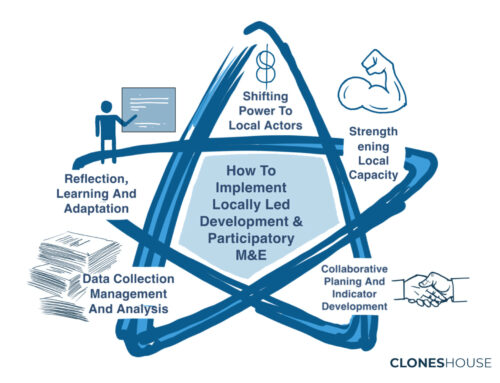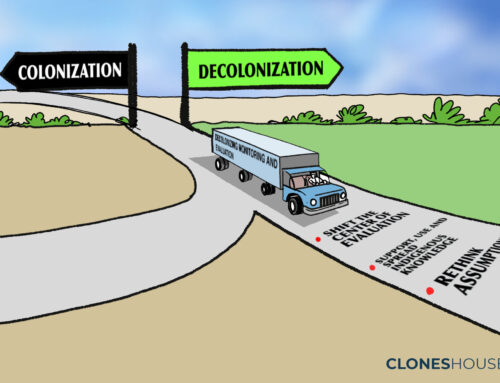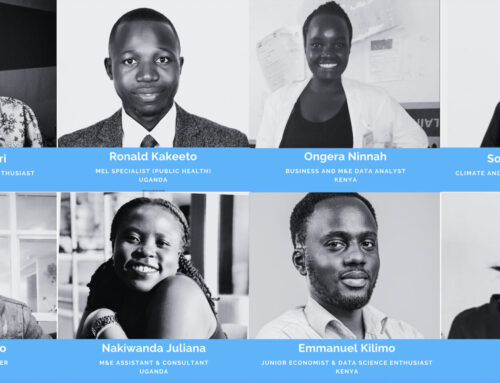Introduction: Equity-Focused Evaluations and Why They Matter
Equity means fairness, eliminating avoidable inequalities by addressing social, political, and economic barriers. As global challenges like climate change deepen disparities, focusing on equity is more important than ever. Equity-focused evaluations not only help assess whether efforts to promote fairness are working, but also uncover both positive and unintended consequences for marginalized communities. These evaluations look at behavior, collect insights from underrepresented groups, identify root causes of inequity, and promote participation. The goal is to create real, lasting change and build a more just society (Bamberger & Segone, 2011).
In this piece, I highlight strategies for carrying out equity-focused evaluation. Central to equity-focused evaluations is the empowerment of marginalized voices through co-created evaluation processes.
Empowerment Through Equity-Focused Evaluations: Strengthening Marginalized Voices
For real change to happen, those most affected by inequities must have a say in shaping solutions (Bamberger & Segone, 2011). Empowerment means giving people the tools, confidence, and opportunities to advocate for themselves (Fetterman & Wandersman, 2007). When evaluations are designed with empowerment in mind, they help communities influence policies and programs that directly impact their lives (Papineau & Kiely, 1996). To truly empower, evaluations need to be inclusive, culturally aware, and based on ethical practices (Hood et al., 2015).
The Role of Co-Creation: Building Inclusive and Participatory Evaluations
Equity-focused evaluations shouldn’t just assess impact, they must actively involve the people they affect. Co-creation means working together with diverse stakeholders, including marginalized groups, to design, implement, and assess evaluations. This approach builds trust, accountability, and shared ownership, ensuring that evaluations reflect real experiences and needs (Westberg & Polk, 2016).
Evaluators play a key role in making this happen. They need to create open spaces for conversation, address power imbalances, and ensure all voices are heard (Schauppenlehner-Kloyber & Penker, 2015).
Practical Strategies for Equity-Focused Evaluations
Below are some key strategies for the implementation of effective, inclusive, and impactful equity-focused evaluations (Bamberger & Segone, 2011; Hood et al., 2015; Tessera, 2021).
1) Planning the Evaluation
- Build a diverse team: Include people from different backgrounds, skills, and expertise, especially those with deep knowledge of equity issues as well as representatives from the community being evaluated.
- Identify key stakeholders: Find out whose voices have been left out and analyze power dynamics to ensure fair representation. You can use this X template to identify stakeholders and their power of influence
- Design with inclusivity in mind:
- Involve stakeholders at every stage; implement a co-creative method.
- Make sure all voices are heard and respected.
- Address common challenges like resistance to equity efforts and lack of investment in marginalized communities.
- Use a context-specific approach that fits the needs of each community.
2) Collecting and Analyzing Data
- Use culturally appropriate methods that seek to understand how constructs are defined by culture.
- Minimize bias by ensuring balanced representation and neutral questioning.
- Be mindful of participants’ time and energy.
- Collect data on identity factors like gender and ethnicity to understand inequalities.
- Break down data into meaningful categories and consider external factors that influence inequities.
3) Reporting Findings
- Before finalizing the report:
- Share findings with stakeholders, give them a chance to review and clarify.
- Ensure marginalized voices are included in discussions.
- Make discussions accessible, allowing time for reflection and input.
- Writing the report:
- Address root causes of inequities and systemic challenges.
- Provide practical, tailored recommendations for different audiences.
- Use clear, accessible language that is easy for communities to understand.
- Include images that are culturally appropriate and do not reinforce stereotypes.
- Consider alternative formats (videos, infographics, community presentations) to make findings more engaging and accessible.

Conclusion
Equity-focused evaluations have the power to create lasting change by empowering communities and ensuring their voices shape decisions. By using participatory, co-creative methods, evaluators can build trust and create spaces for real empowerment. These evaluations also contribute to broader societal resilience by fostering inclusive decision-making, strengthening social cohesion, and enhancing the ability of communities to adapt to challenges (Bamberger & Segone, 2011). The strategies outlined here provide a starting point for making evaluations more inclusive, impactful, and fair for all.
About the Author:
Gin is a young, passionate global health and sustainability researcher at Uppsala University. She has worked on implementation and monitoring and evaluation research regarding (gender) equality and water, sanitation, and hygiene (WASH). She completed her master degree in International Development at the University of Galway and holds a bachelor degree in Social and Economic Sciences from the University of Antwerp. She has several years of experience as a youth volunteer for Plan International, working on topics such as women and girls’ rights to education, political participation, and safety from harassment and gender-based violence.




